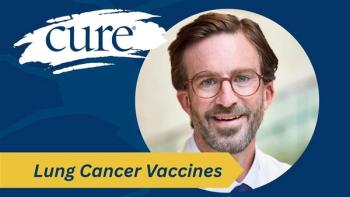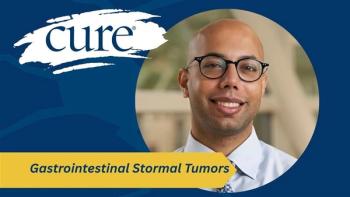
- Heal Spring 2023
The Invisible Side Effect of Visible Cancer Survivorship
How do survivors of head and neck cancer cope with drastic changes to one of the most visibly identifiable body parts — the head?
Many cancer survivors display outward signs of their disease history; people lose hair, gain scars and ostomy bags, or even experience the full or partial loss of a body part. Some survivors embrace the physical changes in their lives wholeheartedly, with tattoos or photo shoots commemorating their new normal.
However, coping with external changes can be a unique challenge for head and neck cancer survivors, whose facial changes include not only disfigurement but challenges with eating, talking and socializing in general.
Head and neck cancer refers to a group of diagnoses where cancer forms in the face, mouth (including the lips, tongue and jawbone), throat, voice box and salivary glands: highly sensitive and critical areas. Survivors often face challenges speaking, chewing, swallowing and smiling, as well as changes to the skin and control over facial muscles, making this a diagnosis nearly impossible to disguise.
Changes to a person’s face and their ability to eat and speak will significantly affect their ability to socialize, which poses a clear risk to mental health as well as the ability to return to previous activities. Stacey Maurer, an assistant professor and clinical psychologist in behavioral medicine in the Department of Psychiatry and Behavioral Sciences at the Medical University of South Carolina in Charleston, has been working with head and neck cancer survivors on the psychological impacts of their treatment.
“The head and neck are parts of the body that you can’t hide. So if you’ve had a lot of changes to them, it’s immediately obvious to the people around you; it changes people’s relationships, how they communicate with people, even day-to-day social interactions. All of that can change really quickly after head and neck cancer treatment, leading to more distress after the treatments.”
Head and neck cancer makes up nearly 4% of all cancers in the United States, according to the National Cancer Institute, and one-fourth of survivors develop clinically significant body image distress. Body image distress has been well studied in breast cancer survivors, but effective treatments for that population have not translated to head and neck cancer survivors because of the vastly different circumstances the two groups face.
Dr. Evan Graboyes, a head and neck cancer surgeon at the Medical University of South Carolina and director of Survivorship and Cancer Outcomes Research at the MUSC Hollings Cancer Center, has examined the effectiveness of applying cognitive behavioral therapy techniques (a specific type of therapy intended to change a patient’s thought patterns and behaviors) to patients affected by body image distress specific to head and neck cancer survivors.
“If we can help patients adapt their thoughts and improve their coping skills, but can’t actually help them look better or swallow better, is that going to be enough?” Graboyes asked in an interview with Heal®. “Our thought is yes. It would seem crazy, in fact, that you could somehow remove half of someone’s tongue and their jawbone and replace it with a transplant from some other part of their body, and then just expect them to be fine in their new life without helping them learn new skills to adapt to that.”
Graboyes and Maurer collaborated on a brief telecognitive behavioral therapy method of counseling survivors. In their pilot study, BRIGHT, they saw success
in treating the unique concerns of this patient population, and are currently working on a larger-scale study that will hopefully expand post-treatment therapy options for head and neck cancer survivors.
For more news on cancer updates, research and education, don’t forget to
Articles in this issue
over 2 years ago
Facing Cancer's External Side Effectsover 2 years ago
Answering the Call for Bladder Cancer Supportover 2 years ago
Spring into Salads for Cancer Survivorsalmost 3 years ago
HPV-Related Cancer: Why Risk It?almost 3 years ago
Managing Chemotherapy-Induced Hair Loss




